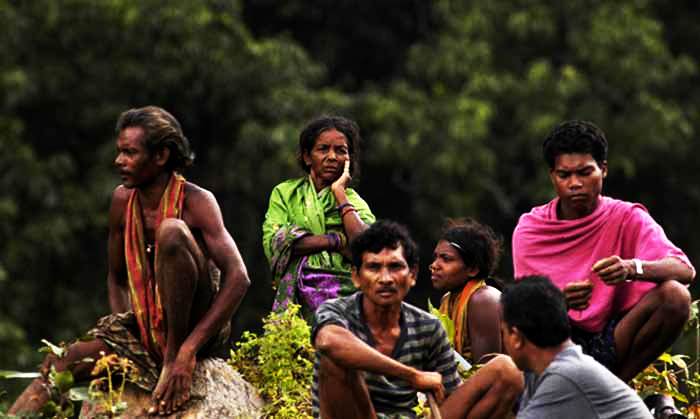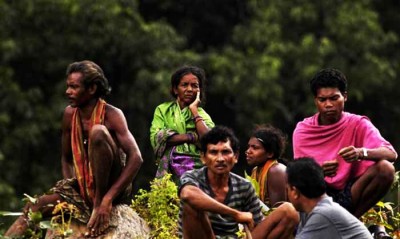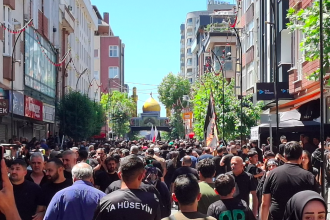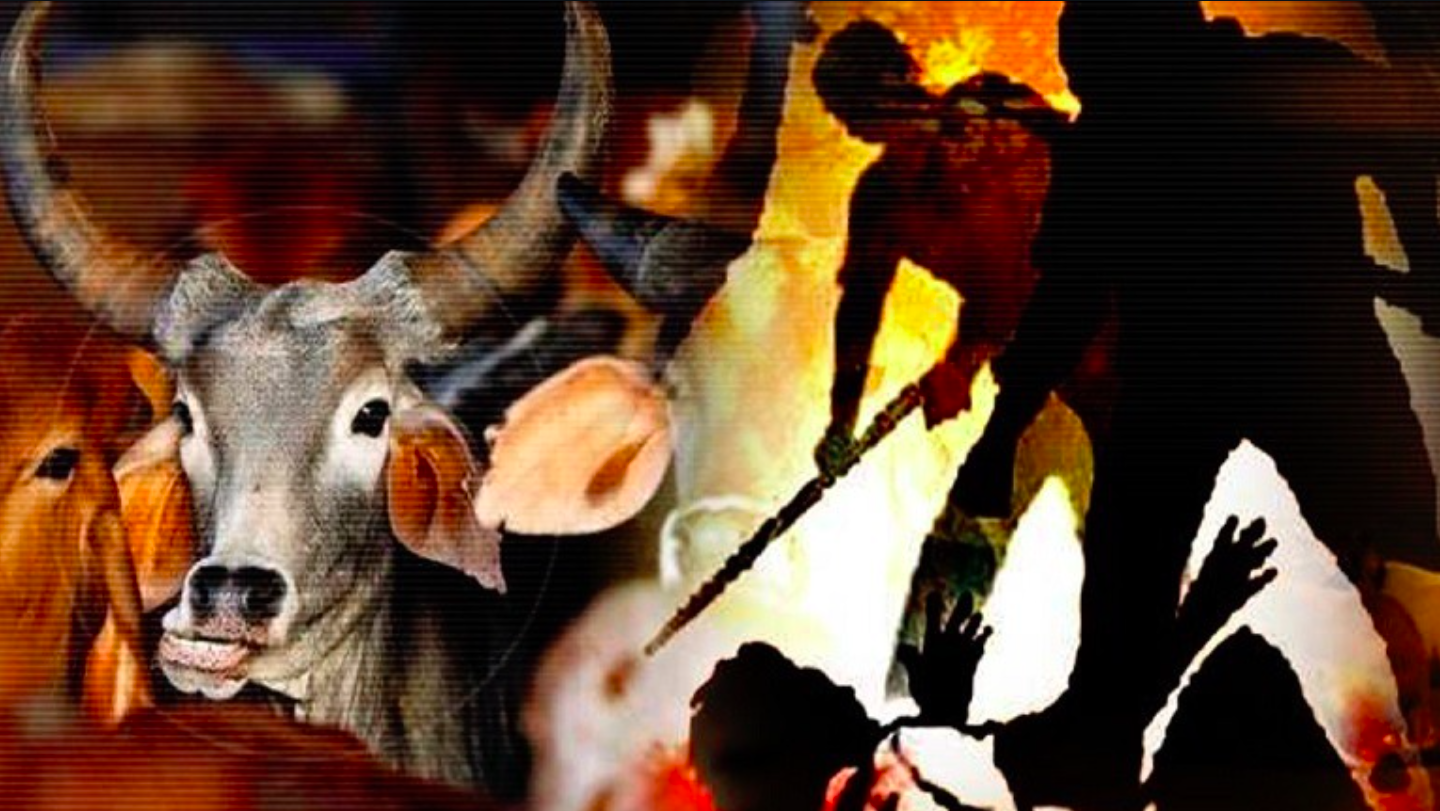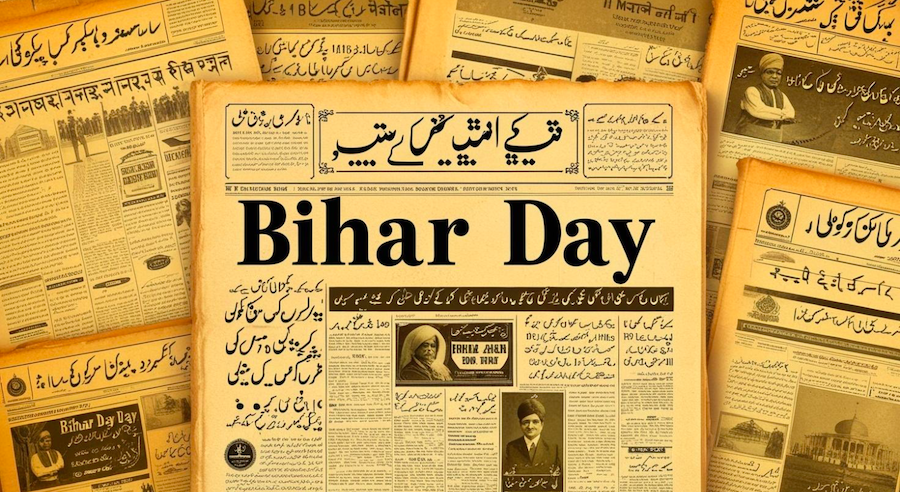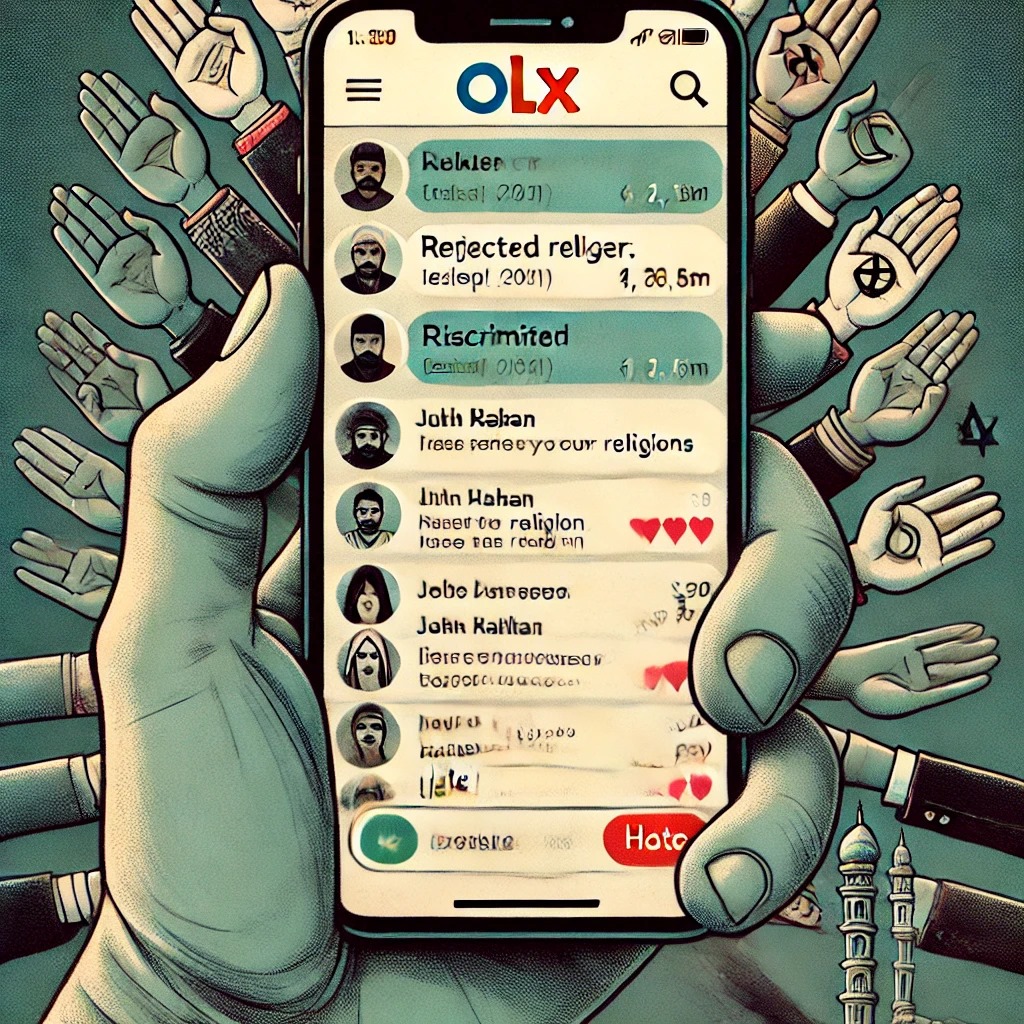Abdul Khaliq for BeyondHeadlines
For the governing elite, discrimination against the Dalit is an overblown problem that is actually a thing of the past. They believe that reservation in government jobs and academia only serves the negative purpose of perpetuating caste. Predictably, the chorus against reservation is spearheaded by the middle class whose philosophy is the naked pursuit of personal advantage devoid of a social conscience. However, for the purveyors of the myth that caste no longer determines one’s life chances, certain news reports that appeared in the last few days should be an eye opener.
In a village 120 kms from Bhopal, the twenty odd Dalit children in the government school are provided segregated seating in the classroom, at arm’s length from their peers. At meal times, they are served only leftovers and that a tiny portion. In Coimbatore, over a thousand Dalits forcibly entered the 120 year old Mariammam temple which has been out of bounds for Dalits. Another news snippet on data released by the RBI shows that between 2004 and 2012, the lowest percentage increase in wages in rural areas was that of sweepers and cobblers- traditionally Dalit occupations – which are even lower than that of unskilled farm labourers.
For those who would brush these off as isolated examples, the details of atrocities committed against Dalits should correct such misconceptions. According to Home ministry estimates, the year wise number of atrocities (murder, abduction, rape, kidnapping and arson) was 26650 in2006; 29825 in2007 and 33,365 in 2008. Mind you, these figures are only partial as most Dalits suffer in silence. So ingrained is caste in our collective consciousness that even a Dalit who converts to Christianity or Islam or Sikhism continues to be hobbled by his social origins. The great Mahatma, who knew this country and its people better than anyone else, had this to say about the plight of even converted Dalits; “whether the harijan is nominally a Hindu, Christian, Muslim, or Sikh, he is still a harijan. He can’t change his spots from Hinduism so-called. He may change his garb and call himself a Catholic harijan or a Muslim harijan or a neo-Sikh, his untouchability will haunt him during his lifetime.” It is not only untouchability and violence but inequality in education, employment and income that the Dalit has to contend with. Caste prejudice is rampant in 21st century India.
The abiding tragedy of our nation is that caste consciousness is a part of our everyday lives; its universality renders it normal. However hard we may delude ourselves, we are all scarred by it. Cultural attitudes about caste that have evolved over the ages are internalised by individual members of society as facts that are unquestioned. Caste consciousness expresses itself in a system of social symbols and meanings that shape social interaction and behaviour. A plainly irrational, wicked belief of Dalit inferiority is embedded in our culture. A common perception is that Dalits are being treated fairly and if they continue to be at the bottom of the hierarchy, it is on account of their inherent inferiority.
Most of us would like to believe that we have transcended caste bias and are normally correct and polite in our dealings with Dalits. But the subterranean volcano of unconscious prejudice erupts in case the Dalit breaches the invisible caste wall by asking for your daughter’s hand in marriage, or seeks employment in your house as a cook or for that matter if he aspires to be a priest in the neighbourhood temple. Then in no uncertain terms, he is shown his rightful place which is that of a pariah. A Dalit who aspires to rise above his ordained subaltern status is exposed to the danger of deep psychological injury through assault on his self-respect and dignity. How often has one heard the heartless comment;”for an SC he’s quite smart” or the deeply hurtful “you don’t look or behave like an SC.” Like the ‘nigger’ in America, the word ‘chamar’ is suffused with awful negative implications associated with inferiority and impurity. Dr Bhimrao Ramji Ambedkar was prescient when he observed while presenting the Draft Constitution; “On 26th January 1950 we will be entering into a life of contradictions. In politics we will have equality and in social and economic life we will have inequality’.
The raison d’être for reservation for SCs/STs inscribed in the Constitution was not mere economic reasons because poverty existed across the castes and communities, but untouchability and all its painful consequences. Social stigmatisation is the blight that our founding fathers wished to eradicate from the social milieu through the various provisions for SCs/STs in the Constitution. The reservation controversy of the day is about the most victimised section of our society claiming jobs and promotions in government proportionate to their number in the population – an unexceptionable proposition.
Unfortunately, even in the limited sphere where the SCs/STs are beneficiaries of affirmative action, the statistics of Dalits in the various tiers of the hierarchy is a damning indictment of the system. To cite an example, as of March 2011 out of 149 secretary level posts in the Centre, there was not a single SC officer. Even if one takes the Group ‘A’ services as a whole, despite reservation being in place since 1955, there are only 11.1% SCs and 4.6% STs, much below the mandated quota. Out of the total Central government employees, 17% are SCs and 7.4% are STs. But this figure is misleading as SCs and STs constitute 45.5% of the total safai karmacharis or sweepers employed by the government which largely accounts for the healthy overall figure of Dalit employment. This is in keeping with the centuries old practice of the dispossessed being assigned the lowest jobs. Significantly, there are any number of non-Dalit safai karmacharis who are on the rolls but subcontract the thankless job of cleaning and scavenging to Dalits who receive a small portion of the salary as recompense. Nobody seems to mind or be threatened by the fact that the Dalits have a disproportionate share of the safai karamchari jobs in government. What is worrying is the heartless resentment against reservation for the weakest section of society, more so when one considers that reservation is restricted to only a fraction of the millions of jobs available where Dalits are marginalised due to their socio-economic condition.
This is the bleak reality that needs to be factored into any discourse on reservations. After all, our most sacred law book- the Constitution- has in the Preamble announced that justice, social, economic and political will be the foremost concern of the Republic. Our founding fathers recognized that social and economic justice would remain a pipedream so long as the lot of the SCs/ STs was not improved drastically. Hence the various provisions such as Article 46 under the Directive Principles which enjoins upon the State ‘to promote with special care the educational and economic interests of the weaker sections of the people and in particular of the SC and ST and shall protect them from social injustice and all forms of exploitation.’ This sacred pledge should rightfully be among the foremost obligations of every wing of government. As interpreter and protector of the Constitution, the Courts cannot escape engaging proactively in this solemn commitment.
There are two Supreme Court judgements that, in essence, represent the highest court’s philosophy on the contentious issue of reservation. In the M.Nagaraj vs Union of India judgement of 2006, the Court directed that each case of reservation in appointment and promotion would have to be justified on the grounds of backwardness and inadequacy of representation, also taking into account the requirements of efficiency In another landmark judgement of April 2012, in the UP Power Corporation vs Rajesh Kumar case, the Supreme Court struck down reservations in promotions on the grounds that the criteria laid down in the Nagaraj case had not been complied with. These judgements are problematic and raise more questions than they answer.
The Supreme Court has, time and again, emphasised that courts are bound by precedent. Yet in the Nagaraj case, the five judge bench has set aside an earlier ruling of the Supreme Court in the Indra Sawhney case in which the nine judge constitutional bench had emphasised that ‘the test or requirement of social and educational backwardness cannot be applied to SC and ST who indubitably fall within the expression “backward class of citizens”. The accent in article 16(4) seems to be on social backwardness.’ This clear principle has been ignored in the Nagaraj case and the ‘creamy layer’ among SCs/STs now debarred from the benefits of reservation, without any justification given for the change in stance. Significantly, neither of the two judgements (Nagaraj andRajesh kumar ) have clarified whether the ‘ creamy layer ‘ principle will apply only to promotions of SCs/STs or also at the time of their recruitment. Any court can cite these judgements and strike down future recruitments that include the ‘creamy layer’ on the irrefutable logic that the principle must apply uniformly to recruitment and promotions.
Even while making polite observations about social justice being an overarching principle that stands at the pinnacle of constitutional values, the two Supreme Court judgements have viewed the issue of reservation in purely economic terms by invoking the issue of ‘creamy layer’ for SCs/STs. The Supreme Court asserts that economic criteria should be the real measure of disabilities. But this argument is an insidious method of obfuscating the terrible damage that social disabilities have caused the Dalit. Everyone knows that only the materially better off citizens possess the wherewithal to compete for the white collar jobs. If you do not have the means, neither health nor a meaningful education nor a white collar job is available to you. It is utopian to believe that the Dalits from the bastis are equipped to compete for the IAS or PCS. By eliminating the creamy layer, the Supreme Court has ensured that Dalits will not qualify in sufficient number to fill up the seats earmarked for them. Even today, although IITs have reservation at the entry level of assistant professor, the actual representation of SCs/STs in these premier institutes overall is less than 4 percent. Social scientists have attributed this phenomenon to their depressed socio-economic position and consequent educational backwardness. Incidentally, will the Courts now arbitrate that the reservation of seats for SCs/STs in Parliament and the State legislature can be filled up only by SCs/STs who do not belong to the ‘creamy layer’?
The court has done a singular disservice to the cause of SCs/STs by clubbing them with OBCs under the ‘backward classes’ group in Article 16. This common categorisation is inappropriate as the OBCs occupy a far better place socially and economically than the Dalits. Many Dalits are deeply perturbed that the much more advanced OBCs, after having ridden piggyback on the Dalits, are now queering the pitch by joining in the chorus against specific safeguards in reservation for Dalits.
There is another major problem in implementing the Supreme Court order regarding ‘backwardness’. The scheme could lead to reservation within reservation. For instance, an SC officer may be the son of a rich farmer whereas another SC officer may pass the test of backwardness on account of his humble origins. Will the claims of the senior SC officer from the ‘creamy layer’ be overlooked and his junior promoted? Clearly this decision of the Supreme Court will result in endless litigation on the grounds that the original service conditions have been altered to the detriment of the officials concerned. Moreover, can any person who is appointed as an officer with its attendant salary and perks be considered backward? The Honourable judges have overlooked these critical issues.
On the face of it, the Supreme Court insistence on the State proving ‘inadequacy of representation’ while making reservations in appointments and promotions seems reasonable, but there is a sting in the tail. The court has gratuitously introduced the element of the cadre as the unit for assessing adequacy of representation. This implies that if SCs are 15% and SCs are 7.5% of the cadre strength, there is adequacy of representation. However, through this diktat, the court has ensured that no corrective action can be taken even if SC/ST representation is only at the lower levels of the cadre. Consequently, the present situation of the SCs/STs being absent in the upper echelons of bureaucracy will continue.
By invoking article 335 and raising the issue of ‘efficiency in administration’ when providing reservation in promotions, the Supreme Court has tacitly implied that reservations in promotion would compromise administrative efficiency. There is the unconscious stereotyping of the Dalit as unintelligent and incompetent. As a rule, every government official, not just the Dalit, is required to pass the test of efficiency in his daily functioning. When a panel is drawn up for promotion, the competence of each individual is assessed on the basis of certain norms of which efficiency is one. But the Supreme Court specifically requires reserved candidates to prove their credentials, which is bound to have a terribly adverse impact on the career prospects of the beneficiaries of reservation. Those of us who have been in government know that an individual’s professional worth is often decided on considerations that are not related to efficiency and merit. The annual confidential report, the maker and breaker of officials, has all along been used with devastating effect to keep the Dalits from the higher echelons of the bureaucracy. To cite an example, for promotions to the level of Additional, Secretary and above, an officer must be graded ‘outstanding’ in at least two years in the preceding 5 years, and in the other 3 years obtain a minimum of ‘very good ‘ rating. When Shri Ram Vilas Paswan was Minister for Railways, he was scandalised at the large number of Group’A’ Dalit officers who did not have the requisite grades to merit promotion. The confidential report of one particularly bright Dalit officer contained the following entry in the column relating to ‘initiative’: ‘he (dalit officer) has an extremely competent set of assistants who have ensured prompt disposal of the work’. Predictably the overall rating given to him was ‘good’, which was enough to ensure that he did not qualify for promotion. In the government’s caste-conscious environment, assessing a Dalit as ‘outstanding’ is considered blasphemy. This vicious mindset has now received a further boost from the Supreme Court directive on efficiency.
The Court ruling on efficiency as a salient requirement for reservation in promotions has been joyously greeted by anti-reservationists who have traditionally used the phony pennant of merit as a stick to vilify the Dalits, although in the bureaucracy merit has little to do with ‘making it’. Recruitment and promotion policies are supposedly based on impersonal job criteria but the actual practices are guided by personal loyalty, nepotism and other extraneous factors. Merit is inextricably linked to caste, and this lethal mix works to the detriment of the Dalit. Irrespective of what the new method for gauging merit will be, the Dalit has reason to fear that his professional future would be bleaker than hitherto.
The recent Supreme Court judgements on the reservation issue have raised legitimate questions regarding the cultural conditioning of judges, as their judicial pronouncements are inevitably coloured by their values and beliefs. They largely share the perceptions of the elite subculture and are therefore not immune from our society’s caste bias. In this case, the Court has ensured that the project of social transformation through affirmative action does not adversely impact the privileged classes. Equality of opportunity in its narrowest, literal sense has been placed above social justice. By fixing the entire burden of persuasion and proof on the Dalit, the highest Court is open to the criticism that the seductive power of ‘equal opportunity’ is being used as a tool for maintaining the hegemony of the governing elite. It has rightly been said that the equal treatment of the unequal is an insidious way of perpetuating inequality. But then, like a judge famously remarked in another context, the Supreme Court has acted as a court of law, not as a court of justice.
From all accounts, Parliament is poised to amend Articles 16 and 335 of the Constitution to overcome the hurdles created by these two judgements in providing reservation in promotions across the board for SCs/STs. However, this is not going to be an easy ride if the ominous warnings of the Court are any indication. Side by side with the principles enunciated for granting reservation in promotion, the Supreme Court in the Nagaraj case, and again in the Rajesh Kumar case has issued this warning: ‘if the appropriate Government enacts a law providing for reservation without keeping in mind the parameters in article 16(4) and article 335, then the Court will certainly set aside and strike down such legislation.’ The conviction of the Court about the rightness and finality of its interpretation of the law seems misplaced, especially when one considers the fact that on the issue of backwardness of SCs/STs, the Supreme Court has expressed contradictory views. The Constitutional bench in the Indra Sawhney case had asserted that the test of backwardness cannot be applied to SCs/STs who indubitably fall within the backward category, but this verdict has been set aside in the Nagaraj case without proper justification. In all fairness to the most vulnerable section of our society, Parliament is duty bound to amend the Constitution to ensure that there is reservation in promotion for SCs/STs at every level of the government, while at the same time making sure that the earmarked mandated quota of 22.5 percent is not breached.
Finally, if we have to do away with reservation, we have to reconstruct our social relations in order to mend the social cleavage. For this to happen, we first need to recognise how caste influences the way in which social and economic privileges are enjoyed, how it determines the nature of human interaction and for that matter how it influences our justice system. Only after such soul searching and realisation can we begin working towards a society of common citizenship where all citizens are equal and are treated equally.
(The author, a former civil servant, is Secretary General of Lok Janshakti Party and can be contacted on akhaliq2007@gmail.com)

